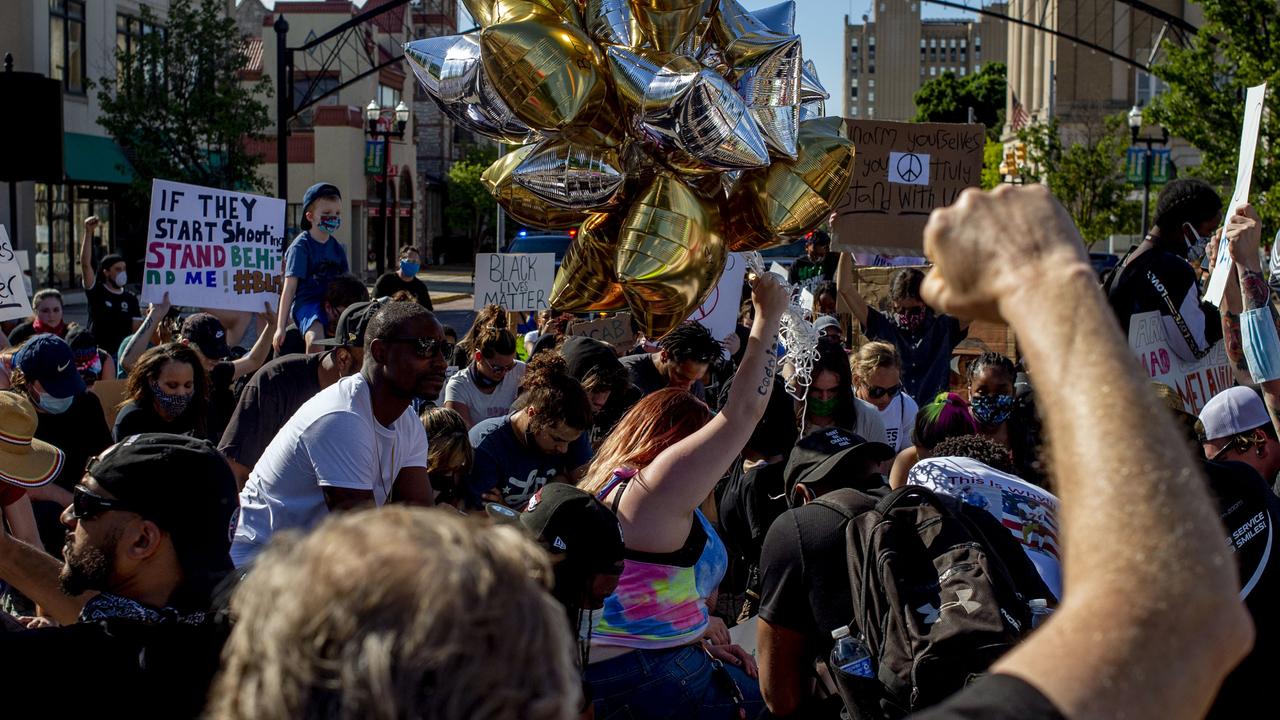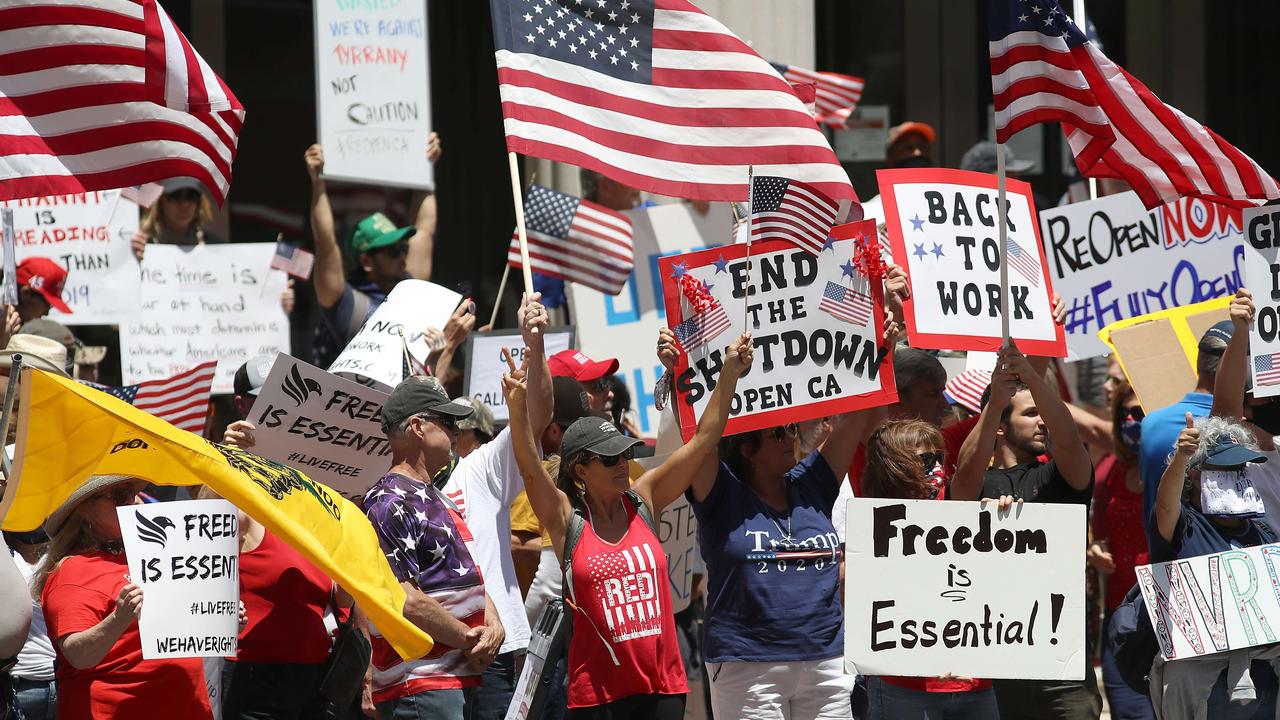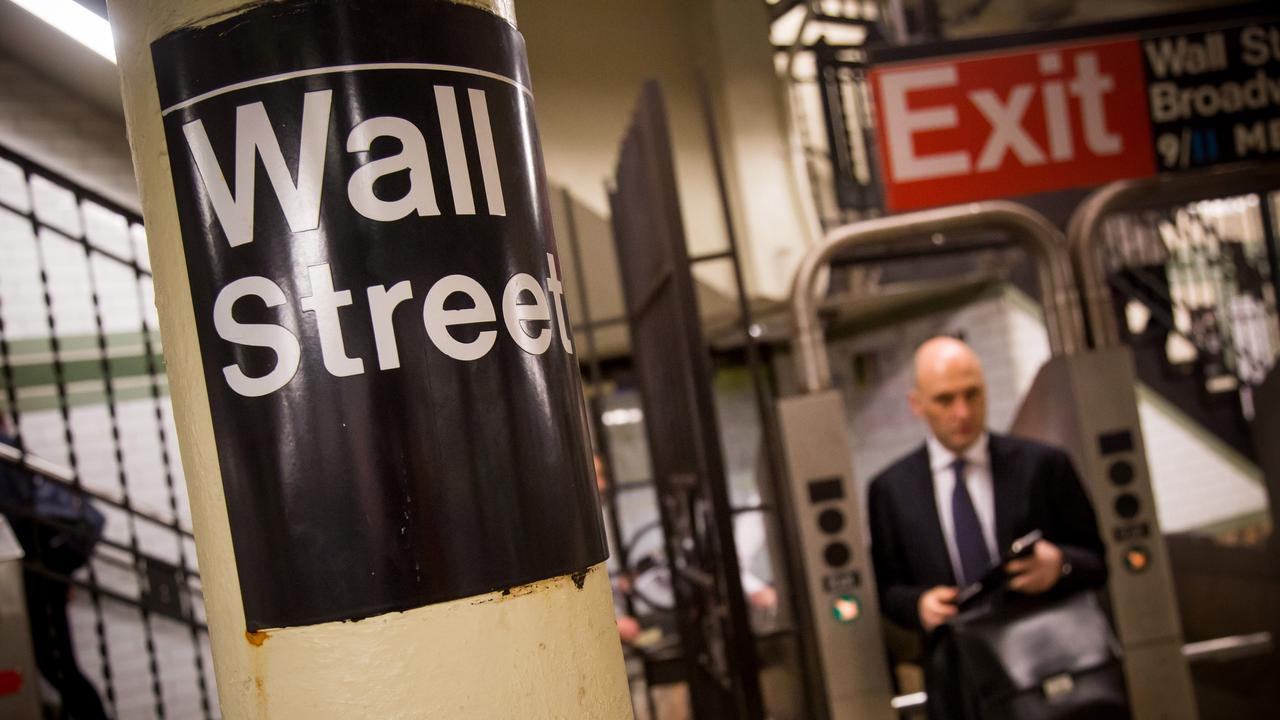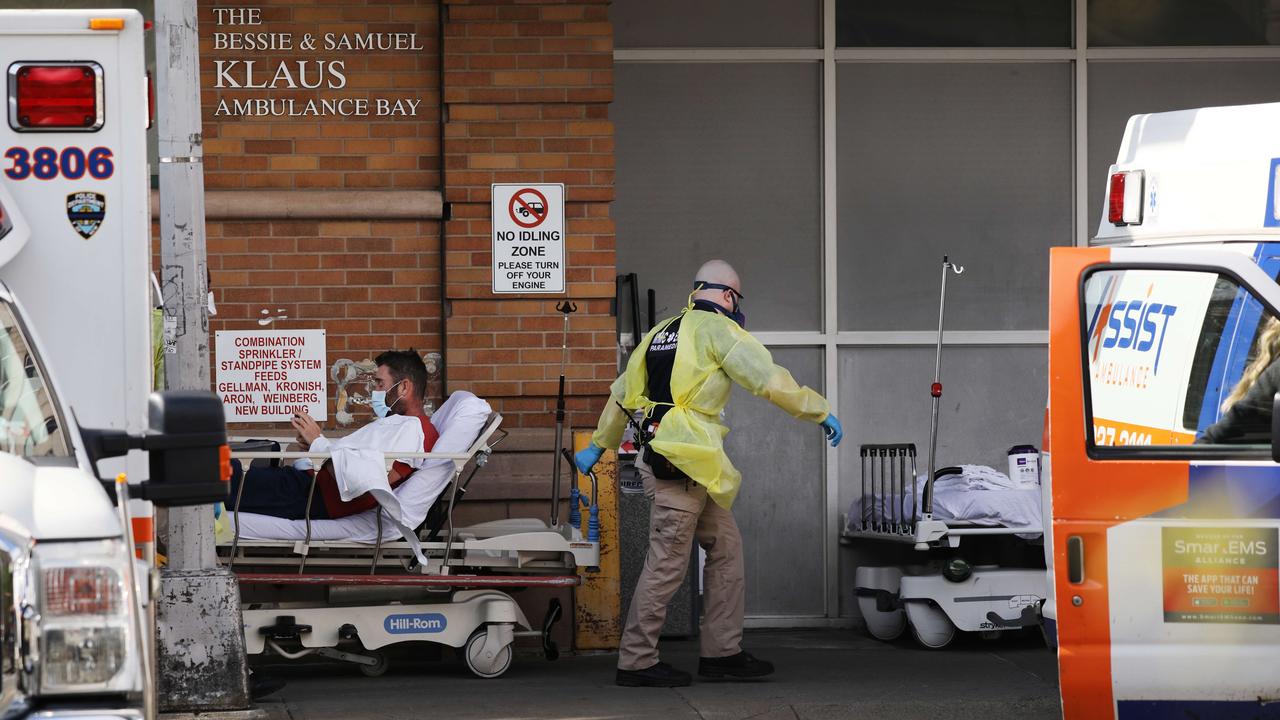风萧萧_Frank
以文会友Four signs America is a 'failing state' – warning about the future of the US
Considered the greatest country on earth for generations, America is far from dominant these days – and could be on the verge of becoming a failing state.
 Shannon Molloy June 26, 2020
Shannon Molloy June 26, 2020For generations, the United States has been viewed by much of the world as an infallible beacon of strength and power, thanks to its economic, military and social prowess.
These days, the country is far from dominant.
Instead, America is exhibiting all of the key indicators that political experts use to characterise a failing state – the kind of nation on the brink you might’ve found in the post-Soviet era or in war-torn regions of Africa and the Middle East.
The notion that the world’s oldest functioning democracy could ever fail was, until recently, “unthinkable to all but the most radical critics”, says George Rennie, an expert on US politics and international relations at the University of Melbourne.
But based on the most common metrics available to political scientists, there are clear signs that the superpower is in trouble, he said.
“The US is increasingly performing poorly on key predictors of state failure – ethnic and class conflict, democratic and institutional backsliding, and other socio-economic indicators including healthcare and inequality,” Mr Rennie wrote in an article for The Conversation.
“It is in crisis – convulsed by riots and protest, driven by a virus that has galloped away from those charged with overseeing it, and heading into a presidential election led by a man that has possibly divided the nation like no other before him.”
A PERFECT STORM
If you head to Google and type in “America is failing”, you’ll receive a plethora of analysis pieces dating back to the birth of the search engine.
“We’ve been here before,” says Dr Gorana Grgic from the United States Studies Centre at the University of Sydney.
“Over the past half a century, there have been these waves of debate about the decline of the US, after the Vietnam War, during the economic turmoil of the late 1980s and early 1990s, after September 11, during the Global Financial Crisis, so this isn’t a new conversation.”
RELATED: Donald Trump accused of leading US to civil war
America seems more divided than ever – on a multitude of issues. Picture: AP
It’s true that America has been confronted with serious issues relating to those indicators of a failing state – but perhaps not all at the same time.
“We are now in the middle of all of these things happening at once,” Dr Grgic said.
But decades of inaction on addressing systemic failures, particularly surrounding social inequality, has come home to roost.
And that growing inequality among much of the American population adds a different dynamic to the challenges the country is facing.
“It’s hugely worrying,” Dr Grgic said.
“Inequality has been worsening for a while. There’s a growing discrepancy between those who have and those who don’t have. Those who have are amassing wealth at a much greater rate. There hasn’t been any positive movement on those fronts.”
DOWNTRODDEN AND DIVIDED
Ethnic and class conflict is one of the biggest challenges to the “‘united’ part of the United States”, Mr Rennie said.
Black Lives Matter protests saw hundreds of thousands of people take to the streets, angry over police brutality against African-Americans.
While the demonstrations were in response to current events, they’re more likely a sign of a long-building tipping point borne from worsening inequality and poverty exacerbating racial tensions.
“The experience of many black Americans is telling,” Mr Rennie said.
“They feel ‘criminalised at birth’, and when this perception reaches a critical mass among a large enough population, states fail.”
Similarly, the widespread push-back against coronavirus restrictions in southern states, some of which featured armed demonstrators storming government buildings, is also about more than immediate disadvantage.
It’s a sign that the low- and middle-class populations, still recovering from the economic devastation of the Global Financial Crisis, are beyond breaking point.
Before the coronavirus crisis took hold, America had achieved record-low unemployment and its economy was continuing to grow at a rapid pace.
But as Mr Rennie points out, much of that wealth and prosperity has been absorbed mostly by those at the very top of the mountain.
The gap between rich and poor is widening, the American middle class is shrinking and the top 1 per cent are carving out a larger piece of the pie.
“For example, CEOs’ pay went from 20 times the average workers’ salary in 1965 to 278 times their salary in 2018,” he said.
“In real terms, only college graduates have seen their pay increase as a group since 1979, and this occurs while 21 per cent of American children live in poverty.
“Moreover, health outcomes for Americans are very poor compared to other OECD countries, despite having the highest per capita healthcare costs in the world.”
RELATED: The thing that divides us could be our downfall
Americans in San Diego protest against coronavirus lockdown measures. Picture: AFP
While all poorer Americans are “getting relatively poorer”, it’s an issue that disproportionately affects black Americans, he pointed out.
And when anger reaches a critical mass and disenfranchised people of colour push back, as they have in recent weeks, it ironically sows further racial division.
Poor white Americans seem “increasingly likely to fight against the perceived injustices of other ethnic groups”, Mr Rennie said.
“They do this by pitting themselves against similarly politically and economically disenfranchised groups, rather than the power system that keeps them dispossessed.”
INSTITUTIONS BREAKING DOWN
If America was a car dashboard, there would be flashing lights to warn about the erosion of critical democratic institutions.
That’s the view of Mr Rennie, who believes the “wealth disconnect” is contributing to politics being less representative.
Analysis conducted last year found the average net worth of both senators and members of the House of Representatives was $500,000. That’s five times the median household worth in the US.
There are 76 federal politicians with a net worth greater than $3 million.
The wealthiest, Greg Gianforte, a Republican congressman from Montana, is worth $135 million, while Senator Mark Warner, a Democrat representing Virginia, is worth $90 million.
According to the news outlet RollCall, the collective wealth of politicians increased by one-fifth in two years to $2.4 billion.
Mr Rennie said there is significant evidence that “the majority of citizens are not being represented” by democracy.
“The black and white, racial narrative of America’s woes misses an important, but even more consequential point,” he said.
“While there is no doubt black Americans are disproportionately suffering, an increasing majority is losing out, regardless of race.”
Economic inequality has risen sharply in America, widening the gap between rich and poor. Picture: Michael Nagle
The ability for governments to get things done has also declined significantly.
In his book First-Class Passengers on a Sinking Ship, author Richard Lachmann, also a professor at the University of Albany-SUNY, wrote that failure across a number of areas has been evident for decades.
“Spending on infrastructure has stagnated as bridges collapse, water and sewer pipes and dams burst, air and road traffic become ever more snarled, and passenger trains on a shrinking network struggle to reach early 20th-century speeds,” Lachmann said.
“Student achievement at the primary, secondary, and university levels has fallen from the top ranks. US students, who attend ever more decrepit schools, are performing less well than their peers in countries with much lower levels of income or educational spending.
“The United States does spend lavishly in two sectors, health care and the military, but its relative standing in both realms has been falling for decades.”
Americans pay more for health care and medicine than elsewhere in the world, despite going to the doctor less and spending fewer days in hospital, he wrote.
The US ranks 34th among nations in life expectancy. The healthcare system spends more than twice on administrative costs than any other OECD nation.
When it comes to the success of the country’s other costliest pursuit – defence – Lachmann said America was unique among dominant powers in its “repeated failure to achieve military objectives” over the past several decades.
“The US military has become ever less able to win wars, even as its advantage in spending and in the amount and sophistication of its armaments has widened over its actual and potential rivals to a level unprecedented in world history.”
A homeless person covered in blankets for warmth sleeps at the entrance of a Metro station near the White House in Washington, DC. Picture: AFP
Political polarisation is also worse than ever, Dr Grgic said, although it’s been steadily worsening for some time.
In the “golden era of bipartisanship” in the mid-parts of the 20th century, it wasn’t uncommon to see politicians crossing party lines. Those days are virtually over.
“If you examine the voting records in the US Congress, you really see this party discipline and an inability to find a middle ground,” she said.
“This has now reached an almost tipping point. The two parties are very distant from one another because they largely speak to different constituents.
“It’s reached fever pitch. It doesn’t come with Donald Trump though. The causes were there for a very long time.”
EASY TO BLAME TRUMP
There’s probably a temptation among many to immediately level blame for the current woes of America on President Donald Trump.
But Dr Grgic said that “history didn’t begin in 2016” and the challenges gripping the nation are “symptoms of an illness that’s very deeply rooted”.
America’s complex challenges didn’t begin in 2016 with the election of Donald Trump. Picture: AFP
Income tax cuts, corporate tax reform and industry deregulation have all largely failed to improve the livelihoods of average Americans, Dr Grgic said.
“This is something that’s very structural and goes way back – long before Trump, long before Obama, before Bush … it’s not new but it’s getting worse.
“What we’re seeing now, I think, is indicative of decades and decades of huge problems that haven’t been addressed.”
Racial inequality is also worsened by systems that make breaking out of poverty and wealth accumulation difficult.
Mr Rennie agreed that successive governments have “proved unable to respond and listen to their citizens”.
“The domestic deterioration of the world’s biggest nuclear and military superpower would prove unprecedented and frightening beyond rational analysis,” he said.
“The challenge now is whether the world’s oldest continuous democracy can live up to its own ideals.”
THE END OF AMERICA?
The demise of the United States has been predicted countless times.
But there’s little doubt that the multitude of complex challenges facing the country are greater than they have been in a long time, and occurring simultaneously.
“The challenge now is also different because for some time, the distribution of global power has been shifting away from the US – other states are amassing power, whether economically or militarily,” Dr Grgic said.
“But power is also shifting away from nation states. We have various non-state actors amassing power … wealthy individuals and corporations, even militant organisations.”
But assuming that the next major player down the ladder – China – will take the mantle as the world’s great superpower is perhaps a premature conclusion, she said.
“Probably where we’re heading, and this is where it’s different from the 70s and 80s, is towards a world that’s increasingly fragmented.”.
The coronavirus crisis, which shows no signs of easing, has added to America’s many issues. Picture: AFP
When it comes to challenges at home, Dr Grgic sees the recent civil unrest as a positive sign for the future and not a negative one.
It points to a segment of the population that shows “no shortage of will and motivation to address some of the issues, whether it be income inequality or race relations, to drive real systemic change”.
She said America’s fate should be a discussion “about relative decline, not absolute decline”.
“When someone hears decline, they associate it with collapse – you know, ‘this is it’. But you have to be careful and distinguish between relative and absolute.”
At the end of the day, she said “no one has a crystal ball”.
“But the US has shown a number of times that it’s able to bounce back.”











